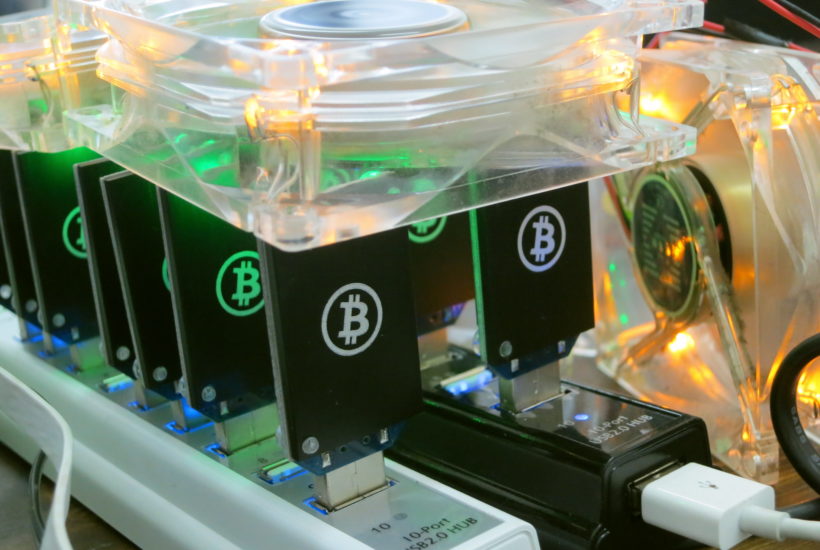Crypto
Bitcoin Mining Complexity May Soon Reach the All-Time High Again
The hash rate changes twice a month. When it does, the network reflects this change. The complexity of bitcoin mining is proportional to the hash rate. When one value increases, the other increases as well. This year, the hash rate of BTC has dropped sharply and the mining complexity has dropped by almost 40% at different intervals.

Over the past three months, Bitcoin‘s hash rate has been getting higher and higher, approaching its all-time high from about half a year ago. That’s according to data from Blockchain.com. The difficulty of the network is increasing due to the accelerated hash rate. The mining complexity of the main cryptocurrency has increased nine times in a row so far and is approaching its last all-time high, which was recorded on May 13th, 2021.
If you want to read more about the complexity of Bitcoin mining, download for free our companion app. Born2Invest’s team of journalists gathers the most interesting business news in a single mobile application. It’s impossible to keep up with everything you’re interested in, but our companion app will help you keep track of the important news. Our app is being updated throughout the day.
Mining complexity makes the system stronger
Satoshi Nakamoto added network complexity as a mechanism to maintain a steady rate of roughly ten-minute blocks. In addition, complexity improves the security of the entire system. The 51 percent attack will be much more difficult and costly to deal with.
The hash rate changes twice a month. When it does, the network reflects this change. The complexity of bitcoin mining is proportional to the hash rate. When one value increases, the other increases as well.
Consequently, one quantity also decreases in sync with the other. For example, when the Chinese government cracked down on mining this summer, the hash rate went down. After that, it became easier to mine Bitcoin. This year, the hash rate of BTC has dropped sharply and the mining complexity has dropped by almost 40% at different intervals.
Bitcoin mining is getting more complicated over time
The all-time high in complexity was 25.05 trillion on May 13th. Just two weeks later, it was 4 trillion less. In July, the value dropped to a new low of just 13.6 trillion. Earlier this month, the largest complexity adjustment since the network’s inception was made.
With a block height of 689,472, the massive drop was nearly 28%. At the time of writing, BTC’s mining complexity stands at just under 22.7 trillion. It is quickly approaching the all-time high of 25.05 trillion.
To reach a new all-time high, the mining complexity needs to increase by more than 10%. In the near future, Bitcoin will be more difficult to mine than it was six months ago. Given the current SHA256 profitability rates, Bitcoin has every chance of breaking this record.
As the price of Bitcoin rises, mining becomes more lucrative, and more people get on board. Then the complexity increases. Microbt Whatsminer M30S++, B2 from Ipollo, and other ASIC rigs for bitcoin mining earn their owners more than $25 per day, even if they have electricity costs of $0.12/kWh. The situation is similar for Ethereum.
__
(Featured image by Mirko Tobias Schäfer CC BY 2.0 via Flickr)
DISCLAIMER: This article was written by a third party contributor and does not reflect the opinion of Born2Invest, its management, staff or its associates. Please review our disclaimer for more information.
This article may include forward-looking statements. These forward-looking statements generally are identified by the words “believe,” “project,” “estimate,” “become,” “plan,” “will,” and similar expressions. These forward-looking statements involve known and unknown risks as well as uncertainties, including those discussed in the following cautionary statements and elsewhere in this article and on this site. Although the Company may believe that its expectations are based on reasonable assumptions, the actual results that the Company may achieve may differ materially from any forward-looking statements, which reflect the opinions of the management of the Company only as of the date hereof. Additionally, please make sure to read these important disclosures.
First published in CRYPTO MONDAY, a third-party contributor translated and adapted the article from the original. In case of discrepancy, the original will prevail.
Although we made reasonable efforts to provide accurate translations, some parts may be incorrect. Born2Invest assumes no responsibility for errors, omissions or ambiguities in the translations provided on this website. Any person or entity relying on translated content does so at their own risk. Born2Invest is not responsible for losses caused by such reliance on the accuracy or reliability of translated information. If you wish to report an error or inaccuracy in the translation, we encourage you to contact us.

-

 Impact Investing1 week ago
Impact Investing1 week agoVernazza Autogru Secures €5M Green Loan to Drive Sustainable Innovation in Heavy Transport
-

 Markets4 days ago
Markets4 days agoRice Market Slips Amid USDA Revisions and Quality Concerns
-

 Business2 weeks ago
Business2 weeks agoLegal Process for Dividing Real Estate Inheritance
-

 Fintech13 hours ago
Fintech13 hours agoJPMorgan’s Data Fees Shake Fintech: PayPal Takes a Hit
























